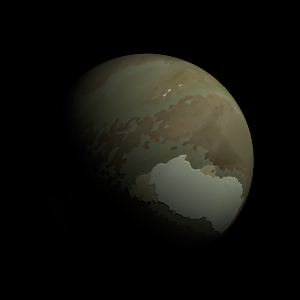|
|
Space Astro
|
Info for exoplanet "Shura Hyobu-byo"
| Scientific (actual) data |
|---|
| Name | Kepler-1201 b |
| Planet status | Confirmed |
| Radius | 0.204 |
| Orbital period | 15.1873 |
| Discovered | 2016 |
| Updated | 2021-02-05 |
| Tconj | 2454970 |
| Publication | Announced on a website |
| Detection type | Primary Transit |
| Alternate names | 2MASS J19382755+4049594 b, K02345.01, KIC 5629538 b, KOI-2345 b, KOI-2345.01, WISE J193827.55+404959.0 b |
| Star name | Kepler-1201 |
| Right ascension | 294.62° |
| Declination | 40.83° |
| Mag j | 13.562 |
| Mag h | 13.265 |
| Mag k | 13.157 |
| Star distance | 1202 |
| Star metallicity | 0.03 |
| Star mass | 1.15 |
| Star radius | 1.24 |
| Star age | 2.95 |
| Star temperature | 6177 |
| Star alternate names | 2MASS J19382755+4049594, KIC 5629538, KOI-2345, WISE J193827.55+404959.0 |
| Wikipedia article | Kepler-1201 b |
Back
| |
| Fictional info (?) |
|---|
| Suggested name | Shura Hyobu-byo |
| Planet type | Cold planet |
| It has the longest rotation period (445 days) of any planet in its solar system and rotates in the opposite direction to most other planets.
The planet telescopically displays the complete range of phases, similar to Venus and the Moon, as it moves in its inner orbit relative to Kepler-1201, which reoccurs over the so-called synodic period approximately every 110 days.
The molecular hydrogen has probably photodissociated, and the free water vapor has been swept into interplanetary space by the solar wind because of the lack of a 2H2O layer.
Its north and south poles, therefore, lie where most other planets have their equators. |
| Atmosphere | Water vapor | 51% |
| Argon | 31% |
| Molecular hydrogen | 9.6% |
| 2H2O | 5.8% |
| Ethane | 2% |
| Sulfur dioxide | 2.0E-6% |
| Atmospheric pressure | 90 bar |
 |
| No known satellites |
| Google search for Shura hyobu-byo |
|
Website by Joachim Michaelis
|
|
|
|